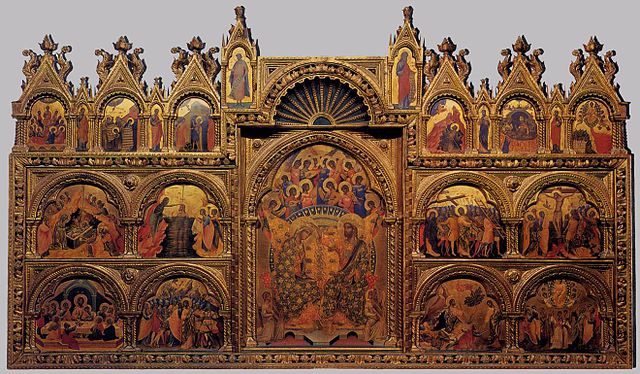Giambattista Pittoni or Giovanni Battista Pittoni was a Venetian painter of the late Baroque or Rococo period. He was among the founders of the Academy of Fine Arts of Venice, of which in 1758 he became the second president, succeeding Tiepolo.
Portrait of Pittoni by Alessandro Longhi, 1762
Portrait of Pittoni by Bartolomeo Nazari
The Death of Sophonisba in the Pushkin Museum in Moscow
View of the Brenta, near Dolo, in the Metropolitan Museum of Art in New York City.
Venetian painting was a major force in Italian Renaissance painting and beyond. Beginning with the work of Giovanni Bellini and his brother Gentile Bellini and their workshops, the major artists of the Venetian school included Giorgione, Titian, Tintoretto (1518–1594), Paolo Veronese (1528–1588) and Jacopo Bassano (1510–1592) and his sons. Considered to give primacy to colour over line, the tradition of the Venetian school contrasted with the Mannerism prevalent in the rest of Italy. The Venetian style exerted great influence upon the subsequent development of Western painting.
Titian, Salome with the Head of John the Baptist c. 1515; this religious work also functions as an idealized portrait of a beauty, a Venetian genre developed by Titian, supposedly often using Venetian courtesans as models.
Canaletto, The Entrance to the Grand Canal, c. 1730, a typical veduta
Giovanni Bellini, San Zaccaria Altarpiece, 1505, a late work, San Zaccaria, Venice
Paolo Veneziano, polyptych altarpiece with Coronation of the Virgin, c. 1350








